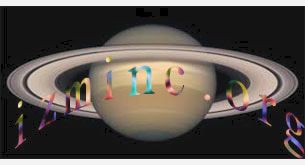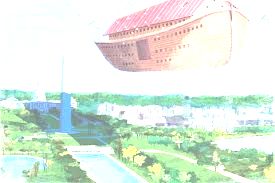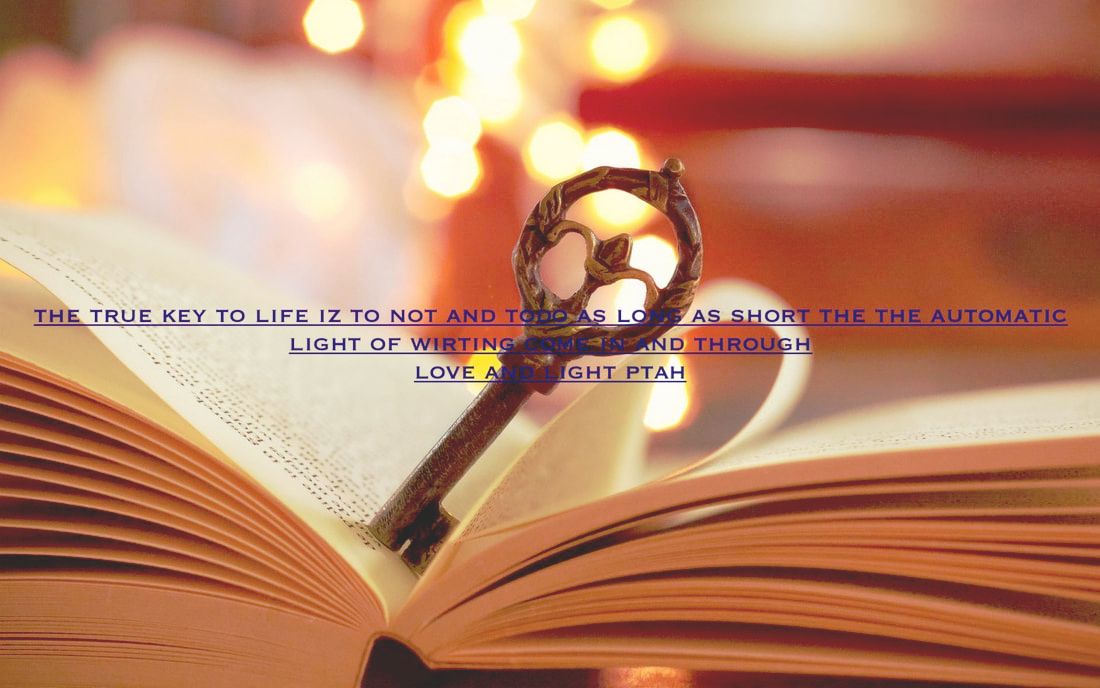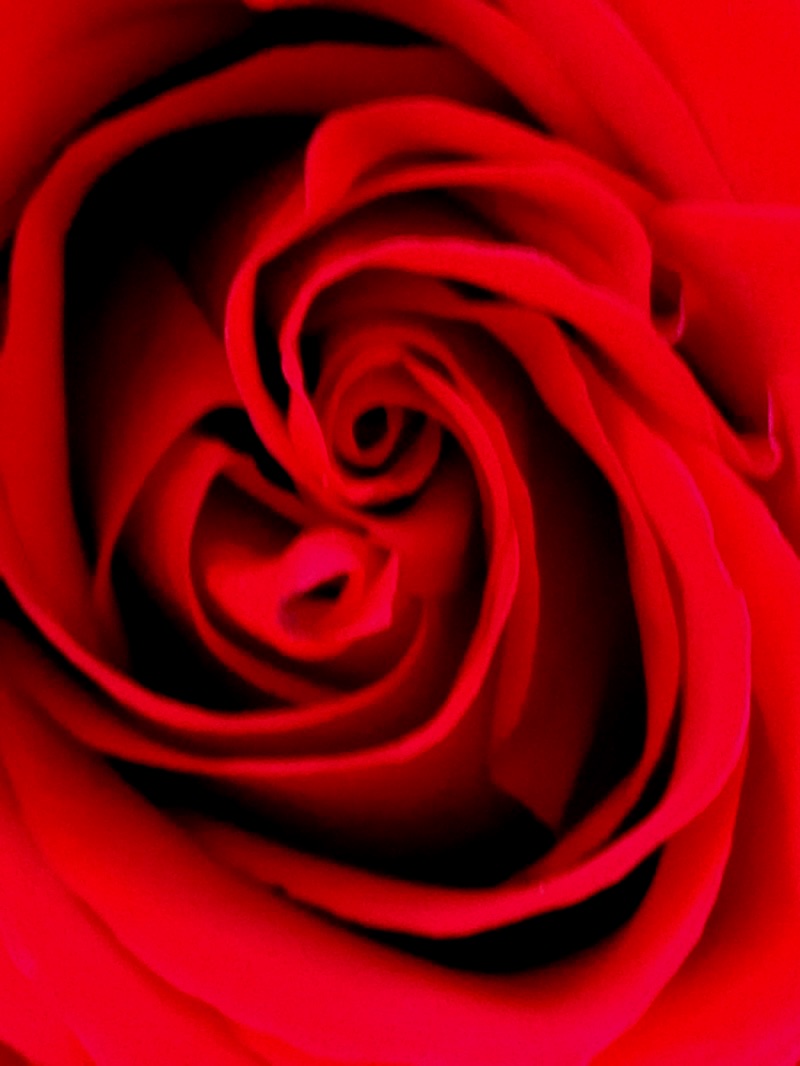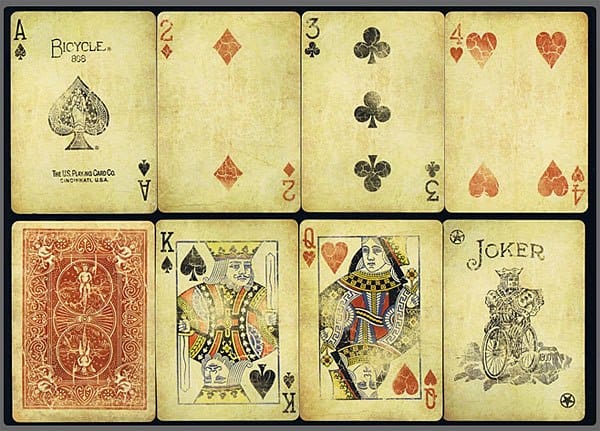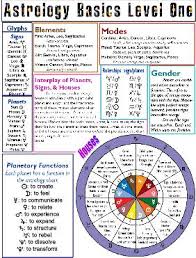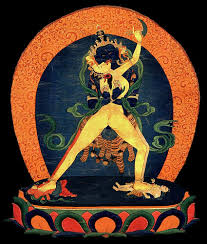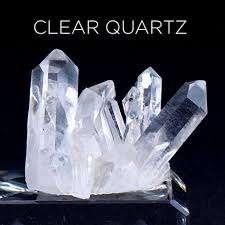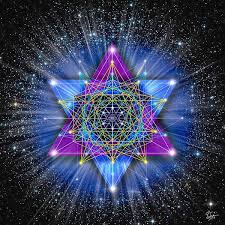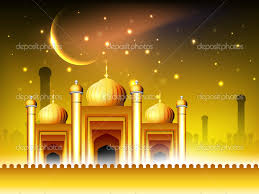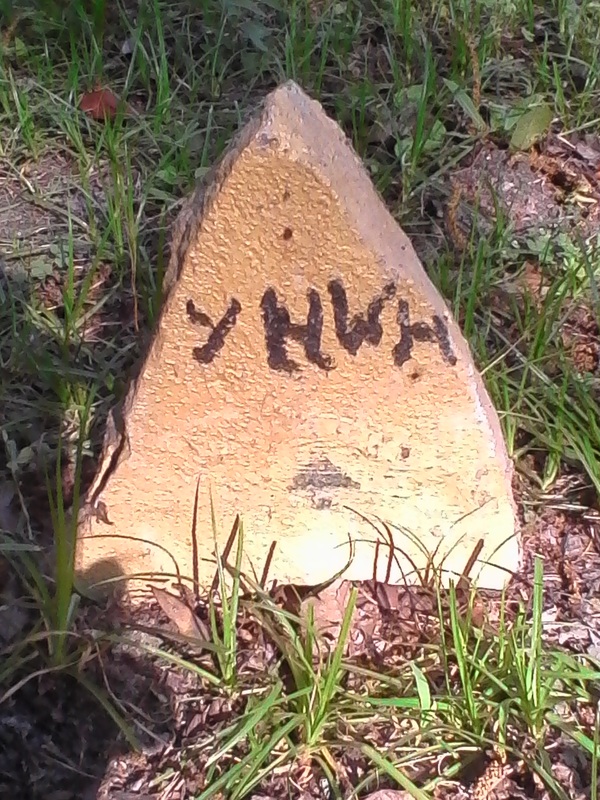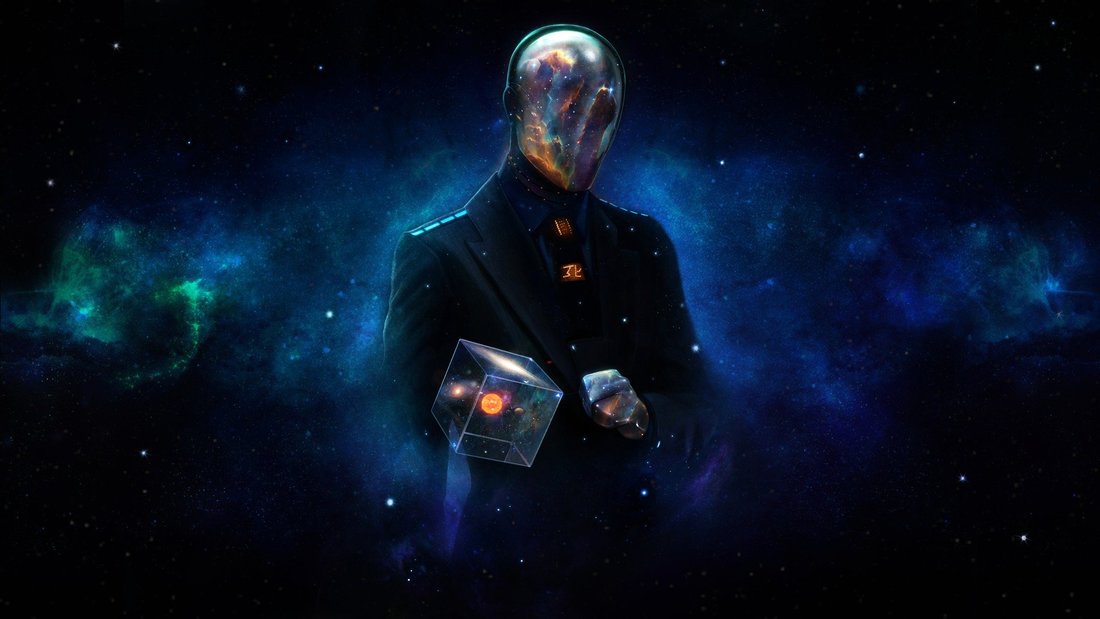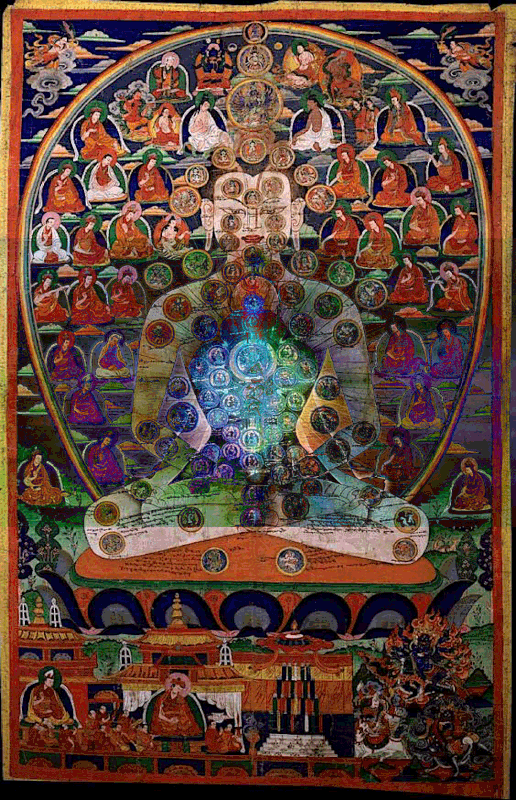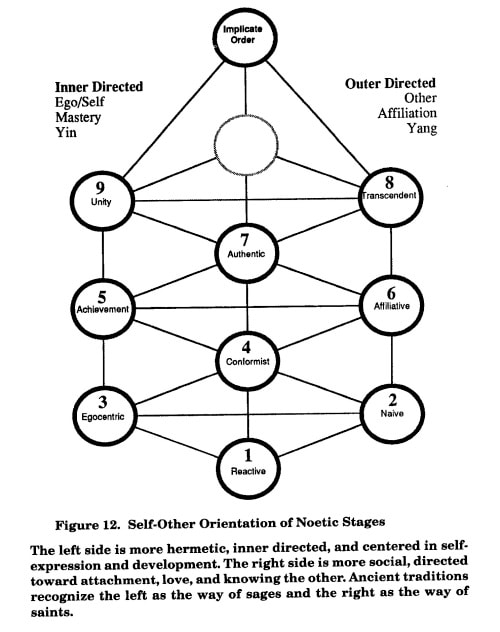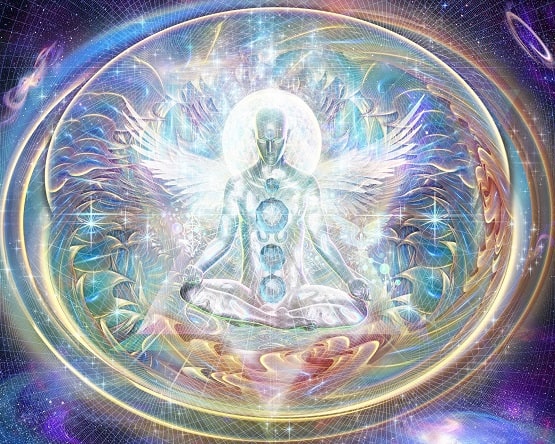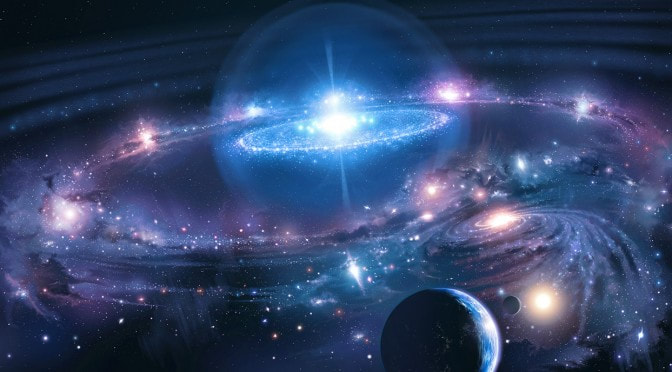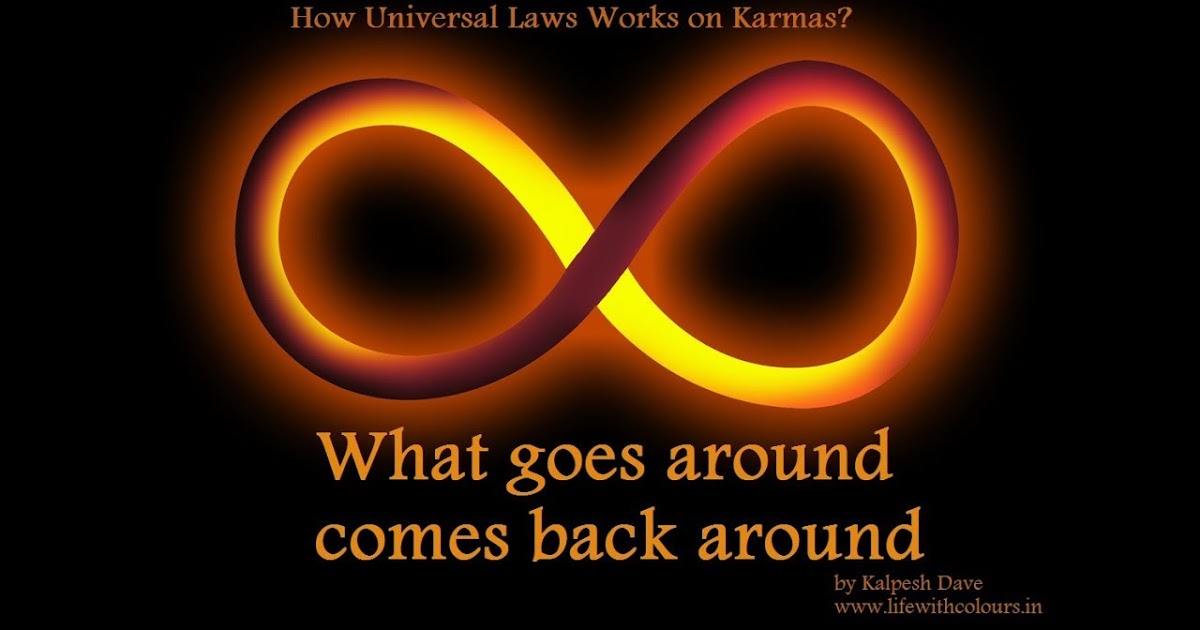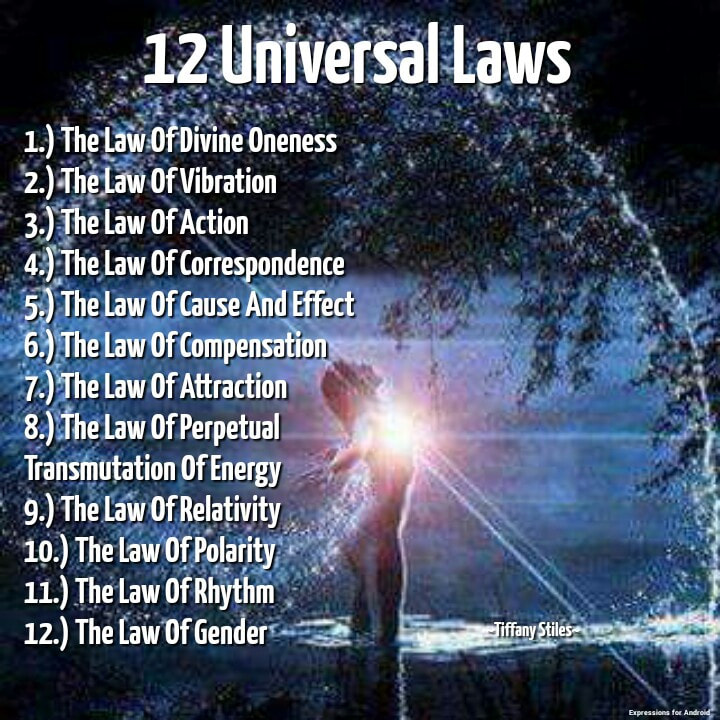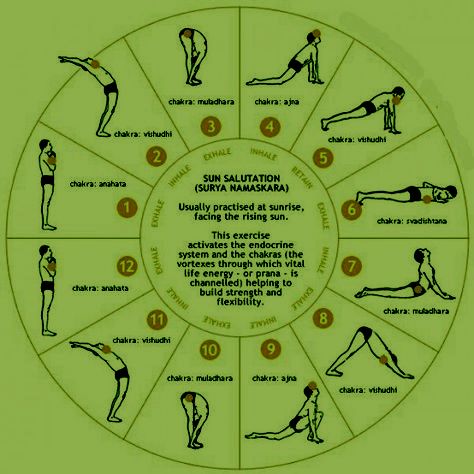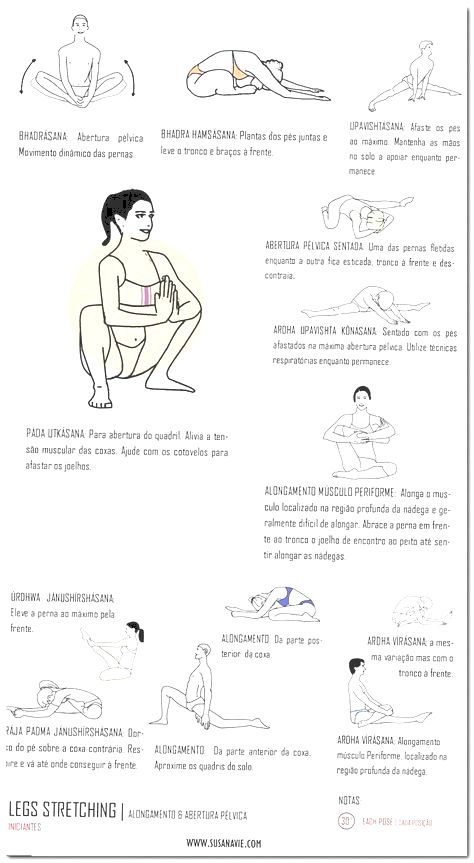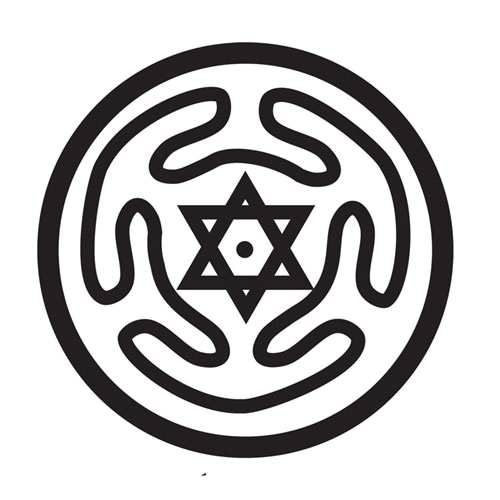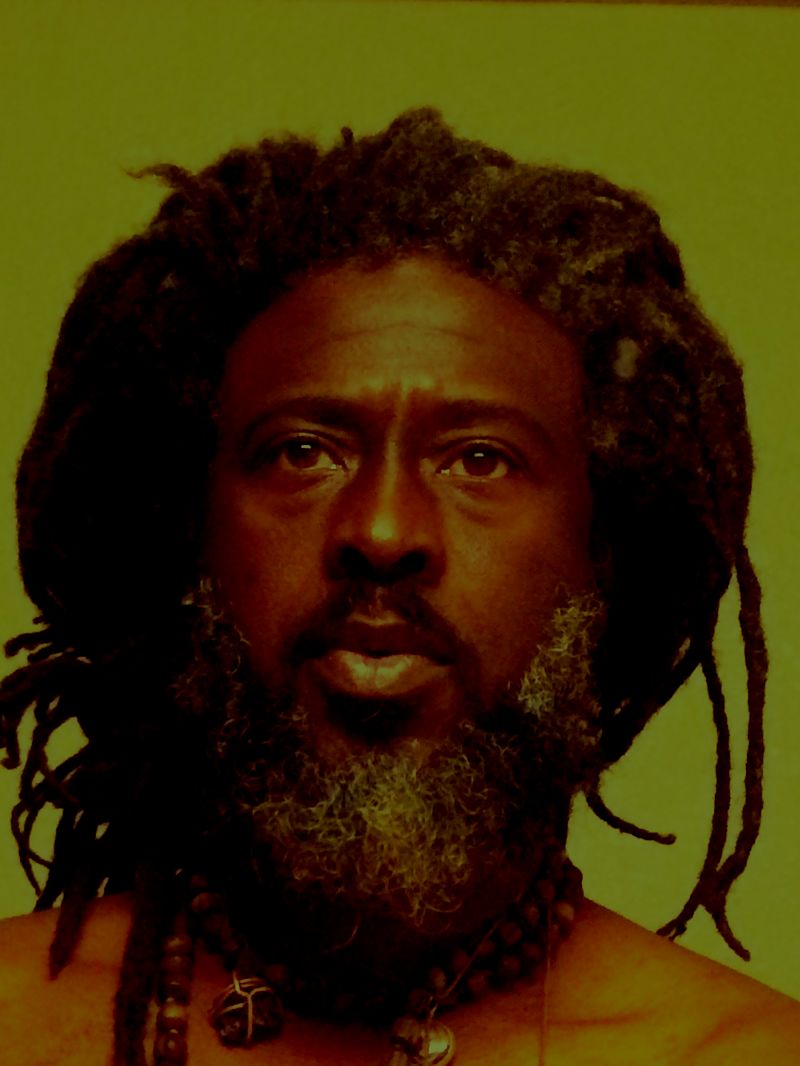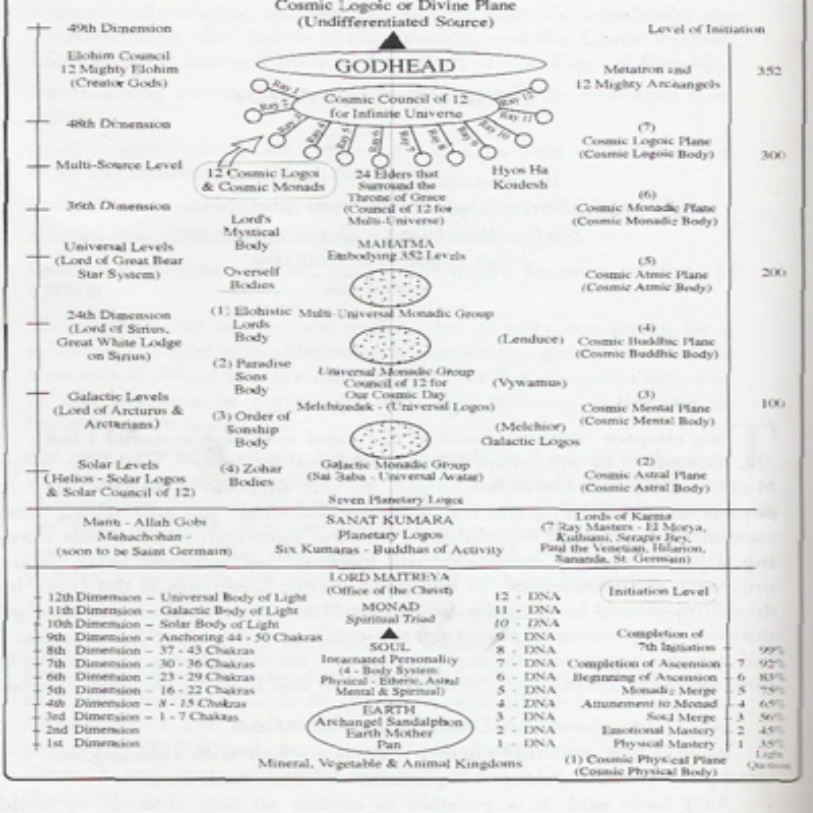WHO GAVE LIFE TO EARTH? TRAVIS CHARLES EIKNER {PTAH]
|
Daily Quotes by PDF Calendar |
Healing Zer Zer
photo by; PTAH ( Travis c .eikner)Global biz
TBN
ASCENDING MASTERS
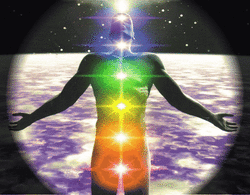
Ascending Masters iz a part of the site that will have things our (subjects ) refering to healing the
body,mind,and soul . Helping the spirit maintain and ascend as we travel on this planet through
space and time. This will include food,stone teachings,yogas,gurus,shamins,breathinghealing power
of color to some of the cures of cancer such as red clover that heals us from cancer.
Now @ ascendingmasters the time has come to ascend. ASCENDINGMASTERS@MILLENNIUMIZM.COM
http://www.youtube.com/watch?v=4oAB83Z1ydE
http://www.youtube.com/watch?v=WQoNW7lOnT4
http://iamthedoc.com/
http://marikal.com/category/video/
READINGS
http://www.facade.com/numerology/
COMMING SOON LIVE READINGS FROM PAM CASE!!!
Happy 2012! The world is not going to end this year, but it will get different. My wish for you is that you soar like the beautiful hawk above. Hawk as an animal totem is the messenger, the protector and the visionaries of the air. Hawk holds the key to higher levels of consciousness. This totem awakens vision and inspires a creative life purpose. A Hawk totem is filled with responsibility because Hawk people seek the overall view. Be careful not to become caught up in the details; step back (or fly high) so you can see the big picture. Observe and study your surroundings and work on accepting things the way they are, rather than forcing change.
To higher consciousness and love,
body,mind,and soul . Helping the spirit maintain and ascend as we travel on this planet through
space and time. This will include food,stone teachings,yogas,gurus,shamins,breathinghealing power
of color to some of the cures of cancer such as red clover that heals us from cancer.
Now @ ascendingmasters the time has come to ascend. ASCENDINGMASTERS@MILLENNIUMIZM.COM
http://www.youtube.com/watch?v=4oAB83Z1ydE
http://www.youtube.com/watch?v=WQoNW7lOnT4
http://iamthedoc.com/
http://marikal.com/category/video/
READINGS
http://www.facade.com/numerology/
COMMING SOON LIVE READINGS FROM PAM CASE!!!
Happy 2012! The world is not going to end this year, but it will get different. My wish for you is that you soar like the beautiful hawk above. Hawk as an animal totem is the messenger, the protector and the visionaries of the air. Hawk holds the key to higher levels of consciousness. This totem awakens vision and inspires a creative life purpose. A Hawk totem is filled with responsibility because Hawk people seek the overall view. Be careful not to become caught up in the details; step back (or fly high) so you can see the big picture. Observe and study your surroundings and work on accepting things the way they are, rather than forcing change.
To higher consciousness and love,
_
A shaman is a medicine man or woman.
Shaman are spiritual beings with the ability to heal, work with energies and 'see' visions. The essential characteristics of shaman are mastery of energy and fire as a medium of transformation.
Shamanism is a range of traditional beliefs and practices that involve the ability to diagnose, cure, and sometimes cause human suffering by traversing the axis mundi and forming a special relationship with, or gaining control over, spirits. Shamans have been credited with the ability to control the weather, divination, the interpretation of dreams, astral projection, and traveling to upper and lower worlds. Shamanistic traditions have existed throughout the world since prehistoric times.
Shamanism is based on the premise that the visible world is pervaded by invisible forces or spirits that affect the lives of the living. In contrast to animism and animatism, which any and usually all members of a society practice, shamanism requires specialized knowledge or abilities. Shamans are not, however, organized into full-time ritual or spiritual associations, as are priests.
Etymology
The word shaman originated among the Siberian Tungus (Evenks) and literally means he (or she) who knows; the belief that the word may be derived from Sanskrit is perhaps due to a confusion of the words 'shamanism' and 'shramanism', from the sanskrit shramana, Pali and Prakrit samana; but the samanas were ascetics, not shamans.
It has replaced the older English language term witch doctor, a term which unites the two stereotypical functions of the shaman: knowledge of magical and other lore, and the ability to cure a person and mend a situation. However, at the present time this term is generally considered to be pejorative and anthropologically inaccurate. Medicine man is preferred, especially as not all traditional peoples approve of the use of shaman as a generic term, given that the word comes from a specific place and people.
History
Shamanistic practices are thought to predate all organized religions, and certainly date back to the neolithic period. Aspects of shamanism are encountered in later, organized religions, generally in their mystic and symbolic practices. Greek paganism was influenced by shamanism, as reflected in the stories of Tantalus, Prometheus, Medea, Calypso among others, as well as in the Eleusinian Mysteries, and other mysteries. Some of the shamanic practices of the Greek religion were later adopted into the Roman religion.
There is a strong shamanistic influence in the Bön religion of central Asia, and in Tibetan Buddhism. Buddhism became popular with shamanic peoples such as the Tibetans, Mongols and Manchu beginning with the eighth century. Forms of shamanistic ritual combined with Tibetan Buddhism became institutionalized as the state religion under the Chinese Yuan dynasty and Qing dynasty. One common element of shamanism and Buddhism is the attainment of spiritual realization, at times mediated by entheogenic (psychedelic) substances.
The shamanic practices of many cultures were virtually wiped out with the spread of Christianity. In Europe, starting around 400 CE, the Christian church was instrumental in the collapse of the Greek and Roman religions. Temples were systematically destroyed and key ceremonies were outlawed. Beginning with the middle ages and continuing into the Renaissance, remnants of European shamanism were wiped out by campaigns against witches. These campaigns were often orchestrated by the Catholic Inquisition.
The repression of shamanism continued as Christian influence spread with Spanish colonization. In the Caribbean, and Central and South America, Catholic priests followed in the footsteps of the Conquistadors and were instrumental in the destruction of the local traditions, denouncing practitioners as "devil worshippers" and having them executed. In North America, the English Puritans conducted periodic campaigns against individuals perceived as witches. More recently, attacks on shamanic practitioners have been carried out at the hands of Christian missionaries to third world countries. As recently as the nineteen seventies, historic petroglyphs were being defaced by missionaries in the Amazon.
It has been postulated that modern state campaigns against the use of psychedelic substances are the offshoot of previous religious campaigns against shamanism.Today, shamanism, once universal, survives primarily among indigenous peoples. Shamanic practice continues today in the tundras, jungles, deserts, and other rural areas, and also in cities, towns, suburbs and shantytowns all over the world. This is especially widespread in Africa as well as South America, where "mestizo shamanism" is widespread.
Many recent efforts have been made trying to link shamanic practice and knowledge with Western, scientific beliefs. Anthropologist Jeremy Narby has proposed that shamans take their consciousness down to the molecular level, working with DNA and viruses that they see as the twin serpents or malicious "darts". The holomovement theory proposed by David Bohm is often seen as an approach to create a scientific foundation for concepts such as parallel worlds and alternative ways to traverse time and space.
Aspects of the Practice Different forms of shamanism are found around the world, and practitioners are also known as medicine men or women, as well as witch doctors.
Initiation and Learning
In Shamanic cultures, the shaman plays a priest like role; however, there is an essential difference between the two, as Joseph Campbell describes:
According to Mircea Eliade, such imagery often includes being transported to the spirit world and interacting with beings inhabiting it, meeting a spiritual guide, being devoured by some being and emerging transformed, and/or being "dismantled" and "reassembled" again, often with implanted amulets such as magical crystals. The imagery of initiation generally speaks of transformation and granting powers, and often entails themes of death and rebirth.
In some societies shamanic powers are considered to be inherited whereas in others shamans are considered to have been "called" - Among the Siberian Chukchis one may behave in ways that Western clinicians would characterize as psychotic, but which Siberian culture interprets as possession by a spirit who demands that one assume the shamanic vocation. Among the South American Tapirape shamans are called in their dreams. In other societies shamans choose their career: First Nations would seek communion with spirits through a "vision quest"; South American Shuar, seeking the power to defend their family against enemies, apprentice themselves to accomplished shamans.
Practice and method
The shaman plays the role of healer in shamanic societies; shamans gain knowledge and power by traversing the axis mundi and bringing back knowledge from the heavens. Even in western society, this ancient practice of healing is referenced by the use of the caduceus as the symbol of medicine.
Oftentimes the shaman has, or acquires, one or more familiar helping entities in the spirit world; these are often spirits in animal form, spirits of healing plants, or (sometimes) those of departed shamans. In many shamanic societies, magic, magical force, and knowledge are all denoted by one word, such as the Quechua term yachay.
While the causes of disease are considered to lie in the realm of the spiritual, being effected by malicious spirits or Witchcraft, spiritual methods as well as what we would consider physical methods are used to heal. The shaman often will enter the body of their patient to find the spirit making the patient sick, and heal by removing the infectious spirit by the patient.
However, many shamans have expert knowledge of the plant life in their area, and an herbal regimine is often perscribed as treatment. In many places, the shamans claim to learn from the plants directly, only being able to determine the effects of a plant and use it to heal after meeting the spirit of the plant and getting permission.
In South America, individual spirits are called through singing icaros; to call the spirit, the spirit must teach you their song.
The use of totem items such as rocks is common; these items are believed to have special powers and an animating spirit.
Such practices are presumably very ancient; in circa 368 bc, Plato wrote in the Phaedrus that the "first prophecies were the words of an oak", and that everyone who lived at that time found it rewarding enough to "listen to an oak or a stone, so long as it was telling the truth".
The belief in witchcraft and sorcery, known as brujeria in South America, is prevalent in many shamanic societies.
Some societies distinguish shamans who cure from sorcerers who harm; others believe that all shamans have the power to both cure and kill; that is, shamans are in some societies also thought of as being capable of harm. The shaman usually enjoys great power and prestige in the community, renowned for their powers and knowledge; but they may also be suspected of harming others and thus feared.
In engaging in this work the shaman exposes himself to significant personal risk, from the spirit world, from any enemy shamans, as well as from the means employed to alter his state of consciousness. Certain of the plant materials used can kill, and the out-of-body journey itself can lead to non-returning and physical death; spells of protection are common, and the use of more dangerous plants is usually very highly ritualized.
Shamanic technology
Generally, the shaman traverses the axis mundi and enters the spirit world by effecting a change of consciousness in himself, entering into an ecstatic trance, either autohypnotically or through the use of entheogens. The methods used are diverse, and often are used in conjunction with each other.
Some of the methods for effecting such altered states of consciousness are:
Most shamans are men, but there are societies in which women may be shamans. In Old Norse Religion, shamanism was seen as un-manly and practiced mainly by women. However, in Old Norse mythology, the supreme god Odin was also seen as the foremost shaman. In some societies shamans exhibit a two-spirit identity, assuming the dress and attributes of the opposite sex from a young age, this may include a man taking on the role of a wife in an otherwise ordinary marriage; this practice is common, and found among the Chukchee, Sea Dyak, Patagonians, Aruacanians, Arapaho, Cheyenne, Navaho, Pawnee, Lakota, and Ute, as well as many other Native American tribes. Such two-spirit shamans are thought to be especially powerful. They are highly respected and sought out in their tribes, as they will bring high status to their mates.
Shamanism and New Age
The New Age movement imported some ideas from shamanism as well as Eastern religions. As in other such imports, the original users of these ideas frequently condemn New Age use as misunderstood and superficial.
At the same time, there is an endeavor in occult and esoteric circles to re-invent shamanism in a modern form drawing from core shamanism, a set of beliefs and practices synthesized by Michael Harner and often revolving around the use of ritual drumming and dance; various indigenous forms of shamanism, often focusing on the ritual use of entheogens, as well as chaos magic.
Much of this is focused upon in Europe, where ancient shamanic traditions was suppressed by the Christian church and where people compelled to be shamans often find it improper to use shamanic systems rooted in other parts of the earth. Various traditional shamans express respect for this endeavor and in this, separate it sharply from "light" New Age shamanism.
Sometimes people from Western cultures claim to be shamans. This is considered offensive by many indigenous medicine men, who view these new age, western "shamans" as hucksters out for money or affirmation of self. Many shamanistic cultures feel there is a danger that their voices will be drowned out by self-styled "shamans"; citing, for example, the fact that Lynn Andrews has sold more books than all Native American authors put together.
HERE IZ A GOOD LINK http://www.shamanism.org/
A shaman is a medicine man or woman.
Shaman are spiritual beings with the ability to heal, work with energies and 'see' visions. The essential characteristics of shaman are mastery of energy and fire as a medium of transformation.
Shamanism is a range of traditional beliefs and practices that involve the ability to diagnose, cure, and sometimes cause human suffering by traversing the axis mundi and forming a special relationship with, or gaining control over, spirits. Shamans have been credited with the ability to control the weather, divination, the interpretation of dreams, astral projection, and traveling to upper and lower worlds. Shamanistic traditions have existed throughout the world since prehistoric times.
Shamanism is based on the premise that the visible world is pervaded by invisible forces or spirits that affect the lives of the living. In contrast to animism and animatism, which any and usually all members of a society practice, shamanism requires specialized knowledge or abilities. Shamans are not, however, organized into full-time ritual or spiritual associations, as are priests.
Etymology
The word shaman originated among the Siberian Tungus (Evenks) and literally means he (or she) who knows; the belief that the word may be derived from Sanskrit is perhaps due to a confusion of the words 'shamanism' and 'shramanism', from the sanskrit shramana, Pali and Prakrit samana; but the samanas were ascetics, not shamans.
It has replaced the older English language term witch doctor, a term which unites the two stereotypical functions of the shaman: knowledge of magical and other lore, and the ability to cure a person and mend a situation. However, at the present time this term is generally considered to be pejorative and anthropologically inaccurate. Medicine man is preferred, especially as not all traditional peoples approve of the use of shaman as a generic term, given that the word comes from a specific place and people.
History
Shamanistic practices are thought to predate all organized religions, and certainly date back to the neolithic period. Aspects of shamanism are encountered in later, organized religions, generally in their mystic and symbolic practices. Greek paganism was influenced by shamanism, as reflected in the stories of Tantalus, Prometheus, Medea, Calypso among others, as well as in the Eleusinian Mysteries, and other mysteries. Some of the shamanic practices of the Greek religion were later adopted into the Roman religion.
There is a strong shamanistic influence in the Bön religion of central Asia, and in Tibetan Buddhism. Buddhism became popular with shamanic peoples such as the Tibetans, Mongols and Manchu beginning with the eighth century. Forms of shamanistic ritual combined with Tibetan Buddhism became institutionalized as the state religion under the Chinese Yuan dynasty and Qing dynasty. One common element of shamanism and Buddhism is the attainment of spiritual realization, at times mediated by entheogenic (psychedelic) substances.
The shamanic practices of many cultures were virtually wiped out with the spread of Christianity. In Europe, starting around 400 CE, the Christian church was instrumental in the collapse of the Greek and Roman religions. Temples were systematically destroyed and key ceremonies were outlawed. Beginning with the middle ages and continuing into the Renaissance, remnants of European shamanism were wiped out by campaigns against witches. These campaigns were often orchestrated by the Catholic Inquisition.
The repression of shamanism continued as Christian influence spread with Spanish colonization. In the Caribbean, and Central and South America, Catholic priests followed in the footsteps of the Conquistadors and were instrumental in the destruction of the local traditions, denouncing practitioners as "devil worshippers" and having them executed. In North America, the English Puritans conducted periodic campaigns against individuals perceived as witches. More recently, attacks on shamanic practitioners have been carried out at the hands of Christian missionaries to third world countries. As recently as the nineteen seventies, historic petroglyphs were being defaced by missionaries in the Amazon.
It has been postulated that modern state campaigns against the use of psychedelic substances are the offshoot of previous religious campaigns against shamanism.Today, shamanism, once universal, survives primarily among indigenous peoples. Shamanic practice continues today in the tundras, jungles, deserts, and other rural areas, and also in cities, towns, suburbs and shantytowns all over the world. This is especially widespread in Africa as well as South America, where "mestizo shamanism" is widespread.
Many recent efforts have been made trying to link shamanic practice and knowledge with Western, scientific beliefs. Anthropologist Jeremy Narby has proposed that shamans take their consciousness down to the molecular level, working with DNA and viruses that they see as the twin serpents or malicious "darts". The holomovement theory proposed by David Bohm is often seen as an approach to create a scientific foundation for concepts such as parallel worlds and alternative ways to traverse time and space.
Aspects of the Practice Different forms of shamanism are found around the world, and practitioners are also known as medicine men or women, as well as witch doctors.
Initiation and Learning
In Shamanic cultures, the shaman plays a priest like role; however, there is an essential difference between the two, as Joseph Campbell describes:
- The priest is the socially initiated, ceremonially inducted
member of a recognized religious organization, where he holds a certain
rank and functions as the tenant of an office that was held by others
before him, while the shaman is one who, as a consequence of a personal
psychological crisis, has gained a certain power of his own.
According to Mircea Eliade, such imagery often includes being transported to the spirit world and interacting with beings inhabiting it, meeting a spiritual guide, being devoured by some being and emerging transformed, and/or being "dismantled" and "reassembled" again, often with implanted amulets such as magical crystals. The imagery of initiation generally speaks of transformation and granting powers, and often entails themes of death and rebirth.
In some societies shamanic powers are considered to be inherited whereas in others shamans are considered to have been "called" - Among the Siberian Chukchis one may behave in ways that Western clinicians would characterize as psychotic, but which Siberian culture interprets as possession by a spirit who demands that one assume the shamanic vocation. Among the South American Tapirape shamans are called in their dreams. In other societies shamans choose their career: First Nations would seek communion with spirits through a "vision quest"; South American Shuar, seeking the power to defend their family against enemies, apprentice themselves to accomplished shamans.
Practice and method
The shaman plays the role of healer in shamanic societies; shamans gain knowledge and power by traversing the axis mundi and bringing back knowledge from the heavens. Even in western society, this ancient practice of healing is referenced by the use of the caduceus as the symbol of medicine.
Oftentimes the shaman has, or acquires, one or more familiar helping entities in the spirit world; these are often spirits in animal form, spirits of healing plants, or (sometimes) those of departed shamans. In many shamanic societies, magic, magical force, and knowledge are all denoted by one word, such as the Quechua term yachay.
While the causes of disease are considered to lie in the realm of the spiritual, being effected by malicious spirits or Witchcraft, spiritual methods as well as what we would consider physical methods are used to heal. The shaman often will enter the body of their patient to find the spirit making the patient sick, and heal by removing the infectious spirit by the patient.
However, many shamans have expert knowledge of the plant life in their area, and an herbal regimine is often perscribed as treatment. In many places, the shamans claim to learn from the plants directly, only being able to determine the effects of a plant and use it to heal after meeting the spirit of the plant and getting permission.
In South America, individual spirits are called through singing icaros; to call the spirit, the spirit must teach you their song.
The use of totem items such as rocks is common; these items are believed to have special powers and an animating spirit.
Such practices are presumably very ancient; in circa 368 bc, Plato wrote in the Phaedrus that the "first prophecies were the words of an oak", and that everyone who lived at that time found it rewarding enough to "listen to an oak or a stone, so long as it was telling the truth".
The belief in witchcraft and sorcery, known as brujeria in South America, is prevalent in many shamanic societies.
Some societies distinguish shamans who cure from sorcerers who harm; others believe that all shamans have the power to both cure and kill; that is, shamans are in some societies also thought of as being capable of harm. The shaman usually enjoys great power and prestige in the community, renowned for their powers and knowledge; but they may also be suspected of harming others and thus feared.
In engaging in this work the shaman exposes himself to significant personal risk, from the spirit world, from any enemy shamans, as well as from the means employed to alter his state of consciousness. Certain of the plant materials used can kill, and the out-of-body journey itself can lead to non-returning and physical death; spells of protection are common, and the use of more dangerous plants is usually very highly ritualized.
Shamanic technology
Generally, the shaman traverses the axis mundi and enters the spirit world by effecting a change of consciousness in himself, entering into an ecstatic trance, either autohypnotically or through the use of entheogens. The methods used are diverse, and often are used in conjunction with each other.
Some of the methods for effecting such altered states of consciousness are:
- Drumming
- Singing
- Fasting
- Sweat lodge
- Vision quests /or vigils,
- Dancing or Spinning Games
- Tobacco
- Fly Agaric
- Psychedelic Mushrooms Alluded to euphemistically as "holy children" by Mazatec shamans such as Maria Sabina
- Peyote
- San Pedro Named thus (St. Peter) by Andean natives because he's the guardian of Gates of Heaven
- Ayahuasca Quechua for "Vine of the Dead"
- Iboga
Most shamans are men, but there are societies in which women may be shamans. In Old Norse Religion, shamanism was seen as un-manly and practiced mainly by women. However, in Old Norse mythology, the supreme god Odin was also seen as the foremost shaman. In some societies shamans exhibit a two-spirit identity, assuming the dress and attributes of the opposite sex from a young age, this may include a man taking on the role of a wife in an otherwise ordinary marriage; this practice is common, and found among the Chukchee, Sea Dyak, Patagonians, Aruacanians, Arapaho, Cheyenne, Navaho, Pawnee, Lakota, and Ute, as well as many other Native American tribes. Such two-spirit shamans are thought to be especially powerful. They are highly respected and sought out in their tribes, as they will bring high status to their mates.
Shamanism and New Age
The New Age movement imported some ideas from shamanism as well as Eastern religions. As in other such imports, the original users of these ideas frequently condemn New Age use as misunderstood and superficial.
At the same time, there is an endeavor in occult and esoteric circles to re-invent shamanism in a modern form drawing from core shamanism, a set of beliefs and practices synthesized by Michael Harner and often revolving around the use of ritual drumming and dance; various indigenous forms of shamanism, often focusing on the ritual use of entheogens, as well as chaos magic.
Much of this is focused upon in Europe, where ancient shamanic traditions was suppressed by the Christian church and where people compelled to be shamans often find it improper to use shamanic systems rooted in other parts of the earth. Various traditional shamans express respect for this endeavor and in this, separate it sharply from "light" New Age shamanism.
Sometimes people from Western cultures claim to be shamans. This is considered offensive by many indigenous medicine men, who view these new age, western "shamans" as hucksters out for money or affirmation of self. Many shamanistic cultures feel there is a danger that their voices will be drowned out by self-styled "shamans"; citing, for example, the fact that Lynn Andrews has sold more books than all Native American authors put together.
HERE IZ A GOOD LINK http://www.shamanism.org/
_
Maat or ma'at (thought to have been pronounced *[muʔ.ʕat]),[1] also spelled māt or mayet, was the ancient Egyptian concept of truth, balance, order, law, morality, and justice. Maat was also personified as a goddess regulating the stars, seasons, and the actions of both mortals and the deities, who set the order of the universe from chaos at the moment of creation.
The earliest surviving records indicating Maat is the norm for nature and society, in this world and the next, was recorded during the Old Kingdom, the earliest substantial surviving examples being found in the pyramid texts of Unas (ca. 2375 BCE and 2345 BCE).[2]
Later, as a goddess in other traditions of the Egyptian pantheon, where most goddesses were paired with a male aspect, her masculine counterpart was Thoth and their attributes are the same. After the rise of Ra they were depicted together in the Solar Barque.
After her role in creation and continuously preventing the universe from returning to chaos, her primary role in Egyptian mythology dealt with the weighing of souls that took place in the underworld, Duat.[3] Her feather was the measure that determined whether the souls (considered to reside in the heart) of the departed would reach the paradise of afterlife successfully.
Pharaohs are often depicted with the emblems of Maat to emphasise their role in upholding the laws of the Creator.[4]
Contents [hide]
The significance of Maat developed to the point that it embraced all aspects of existence, including the basic equilibrium of the universe, the relationship between constituent parts, the cycle of the seasons, heavenly movements, religious observations and fair dealings, honesty and truthfulness in social interactions.[5]
The ancient Egyptians had a deep conviction of an underlying holiness and unity within the universe. Cosmic harmony was achieved by correct public and ritual life. Any disturbance in cosmic harmony could have consequences for the individual as well as the state. An impious King could bring about famine or blasphemy blindness to an individual.[6] In opposition to the right order expressed in the concept of Maat is the concept of Isfet: chaos, lies and violence.[7]
In addition to the importance of the Maat, several other principles within ancient Egyptian law were essential, including an adherence to tradition as opposed to change, the importance of rhetorical skill, and the significance of achieving impartiality, and social justice. In one Middle Kingdom (2062 to c. 1664 BCE) text the Creator declares "I made every man like his fellow". Maat called the rich to help the less fortunate rather than exploit them, echoed in tomb declarations: "I have given bread to the hungry and clothed the naked" and "I was a husband to the widow and father to the orphan".[8]
To the Egyptian mind, Maat bound all things together in an indestructible unity: the universe, the natural world, the state, and the individual were all seen as parts of the wider order generated by Maat.
The underlying concepts of Taoism and Confucianism resemble Maat at times.[9] Many of these concepts were codified into laws, and many of the concepts often were discussed by ancient Egyptian philosophers and officials who referred to the spiritual text known as the Book of the Dead.
[edit] Maat and the law There is little surviving literature that describes the practice of ancient Egyptian law. Maat was the spirit in which justice was applied rather than the detailed legalistic exposition of rules (as found in Mosaic law of the 1st millennium BCE). Maat was the norm and basic values that formed the backdrop for the application of justice that had to be carried out in the spirit of truth and fairness. From the 5th dynasty (c. 2510-2370 BCE) onwards the Vizier responsible for justice was called the Priest of Maat and in later periods judges wore images of Maat.[10]
Later scholars and philosophers also would embody concepts from the wisdom literature, or Sebayt.[11] These spiritual texts dealt with common social or professional situations and how each was best to be resolved or addressed in the spirit of Maat. It was very practical advice, and highly case-based, so that few specific and general rules could be derived from them.
During the Greek period in Egyptian history, Greek law existed alongside Egyptian law. The Egyptian law preserved the rights of women who were allowed to act independently of men and own substantial personal property and in time this influenced the more restrictive conventions of the Greeks and Romans.[12] When the Romans took control of Egypt, the Roman legal system which existed throughout the Roman Empire was imposed in Egypt.
[edit] Maat and scribes Scribes held prestigious positions in ancient Egyptian society in view of their importance in the transmission of religious, political and commercial information.[13]
Thoth was the patron of scribes who is described as the one "who reveals Maat and reckons Maat; who loves Maat and gives Maat to the doer of Maat".[14] In texts such as the Instruction of Amenemope the scribe is urged to follow the precepts of Maat in his private life as well as his work.[15] The exhortations to live according to Maat are such that these kinds of instructional texts have been described as "Maat Literature".[16]
[edit] Maat as a goddess
or or
or
or or
or
or
Goddess Maat[17][18]
in hieroglyphs Maat was the goddess of harmony, justice, and truth represented as a young woman,[19] sitting or standing, holding a was scepter, the symbol of power, in one hand and an ankh, the symbol of eternal life, in the other. Sometimes she is depicted with wings on each arm or as a woman with an ostrich feather on her head.[20] Depictions of Maat as a goddess are recorded from as early as the middle of the Old Kingdom (c. 2680 to 2190 BCE).[21]
The sun-god Ra came from the primaeval mound of creation only after he set his daughter Maat in place of Isfet (chaos). Kings inherited the duty to ensure Maat remained in place and they with Ra are said to "live on Maat", with Akhenaten (r. 1372-1355 BCE) in particular emphasising the concept. Some of them incorporated Maat into their names, being referred to as Lords of Maat,[22] or Meri-Maat (Beloved of Maat). When beliefs about Thoth arose in the Egyptian pantheon and started to consume the earlier beliefs at Hermopolis about the Ogdoad, it was said that she was the mother of the Ogdoad and Thoth the father.
In the Duat, the Egyptian underworld, the hearts of the dead were said to be weighed against her single "Feather of Ma'at", symbolically representing the concept of Maat, in the Hall of Two Truths. A heart which was unworthy was devoured by the goddess Ammit and its owner condemned to remain in the Duat. The heart was considered the location of the soul by ancient Egyptians. Those people with good and pure hearts were sent on to Aaru. Osiris came to be seen as the guardian of the gates of Aaru after he became part of the Egyptian pantheon and displaced Anubis in the Ogdoad tradition.
The weighing of the heart, pictured on papyrus in the Book of the Dead typically, or in tomb scenes, shows Anubis overseeing the weighing and the lioness Ammit seated awaiting the results so she could consume those who failed. The image would be the vertical heart on one flat surface of the balance scale and the vertical Shu-feather standing on the other balance scale surface. Other traditions hold that Anubis brought the soul before the posthumous Osiris who performed the weighing.
[edit] Temples of Maat The earliest evidence for a dedicated temple is in the New Kingdom (c. 1569 to 1081 BCE) era, despite the great importance placed on Maat. Amenhotpe III commissioned a temple in the Karnak complex, whilst textual evidence indicates that other temples of Maat were located in Memphis and at Deir el-Medina.[23]
[edit] Maat themes found in the Book of the Dead and on tomb inscriptions This section may contain original research. Please improve it by verifying the claims made and adding references. Statements consisting only of original research may be removed. More details may be available on the talk page. (November 2011) A section of the Egyptian Book of the Dead written on papyrus showing the "Weighing of the Heart" in the Duat using the feather of Maat as the measure in balance One aspect of ancient Egyptian funerary literature which often is mistaken for a codified ethic of Maat is Spell (Chapter) 125 of the Book of the Dead or Papyrus of Ani (known to the ancient Egyptians as The Book of Going Forth by Day). The lines of this spell are often collectively called the "Forty-Two Declarations of Purity" or the Negative Confessions. These declarations varied somewhat from tomb to tomb and so cannot be considered a canonical definition of Maat. Rather, they appear to express each tomb owner's individual conception of Maat, as well as working as a magical absolution—misdeeds or mistakes made by the tomb owner in life could be declared as not having been done, and through the power of the written word, wipe that particular misdeed from the afterlife record of the deceased.
Many of the lines are similar, however, and they can help to give the student a "flavor" for the sorts of things which Maat governed — essentially everything, from the most formal to the most mundane aspects of life.
The doctrine of Maat is represented in the declarations to Rekhti-merti-f-ent-Maat and the 42 Negative Confessions listed in the Papyrus of Ani. The following are taken from public domain translations made by E. A. Wallis Budge in the early part of the 20th century; more recent translations may differ in the light of modern scholarship.
[edit] 42 Confessions (Papyrus of Ani)
Maat or ma'at (thought to have been pronounced *[muʔ.ʕat]),[1] also spelled māt or mayet, was the ancient Egyptian concept of truth, balance, order, law, morality, and justice. Maat was also personified as a goddess regulating the stars, seasons, and the actions of both mortals and the deities, who set the order of the universe from chaos at the moment of creation.
The earliest surviving records indicating Maat is the norm for nature and society, in this world and the next, was recorded during the Old Kingdom, the earliest substantial surviving examples being found in the pyramid texts of Unas (ca. 2375 BCE and 2345 BCE).[2]
Later, as a goddess in other traditions of the Egyptian pantheon, where most goddesses were paired with a male aspect, her masculine counterpart was Thoth and their attributes are the same. After the rise of Ra they were depicted together in the Solar Barque.
After her role in creation and continuously preventing the universe from returning to chaos, her primary role in Egyptian mythology dealt with the weighing of souls that took place in the underworld, Duat.[3] Her feather was the measure that determined whether the souls (considered to reside in the heart) of the departed would reach the paradise of afterlife successfully.
Pharaohs are often depicted with the emblems of Maat to emphasise their role in upholding the laws of the Creator.[4]
Contents [hide]
- 1 Maat as a principle
- 2 Maat as a goddess
- 3 Temples of Maat
- 4 Maat themes found in the Book of the Dead and on tomb inscriptions
- 5 Assessors of Maat
- 6 See also
- 7 Notes
- 8 References
The significance of Maat developed to the point that it embraced all aspects of existence, including the basic equilibrium of the universe, the relationship between constituent parts, the cycle of the seasons, heavenly movements, religious observations and fair dealings, honesty and truthfulness in social interactions.[5]
The ancient Egyptians had a deep conviction of an underlying holiness and unity within the universe. Cosmic harmony was achieved by correct public and ritual life. Any disturbance in cosmic harmony could have consequences for the individual as well as the state. An impious King could bring about famine or blasphemy blindness to an individual.[6] In opposition to the right order expressed in the concept of Maat is the concept of Isfet: chaos, lies and violence.[7]
In addition to the importance of the Maat, several other principles within ancient Egyptian law were essential, including an adherence to tradition as opposed to change, the importance of rhetorical skill, and the significance of achieving impartiality, and social justice. In one Middle Kingdom (2062 to c. 1664 BCE) text the Creator declares "I made every man like his fellow". Maat called the rich to help the less fortunate rather than exploit them, echoed in tomb declarations: "I have given bread to the hungry and clothed the naked" and "I was a husband to the widow and father to the orphan".[8]
To the Egyptian mind, Maat bound all things together in an indestructible unity: the universe, the natural world, the state, and the individual were all seen as parts of the wider order generated by Maat.
The underlying concepts of Taoism and Confucianism resemble Maat at times.[9] Many of these concepts were codified into laws, and many of the concepts often were discussed by ancient Egyptian philosophers and officials who referred to the spiritual text known as the Book of the Dead.
[edit] Maat and the law There is little surviving literature that describes the practice of ancient Egyptian law. Maat was the spirit in which justice was applied rather than the detailed legalistic exposition of rules (as found in Mosaic law of the 1st millennium BCE). Maat was the norm and basic values that formed the backdrop for the application of justice that had to be carried out in the spirit of truth and fairness. From the 5th dynasty (c. 2510-2370 BCE) onwards the Vizier responsible for justice was called the Priest of Maat and in later periods judges wore images of Maat.[10]
Later scholars and philosophers also would embody concepts from the wisdom literature, or Sebayt.[11] These spiritual texts dealt with common social or professional situations and how each was best to be resolved or addressed in the spirit of Maat. It was very practical advice, and highly case-based, so that few specific and general rules could be derived from them.
During the Greek period in Egyptian history, Greek law existed alongside Egyptian law. The Egyptian law preserved the rights of women who were allowed to act independently of men and own substantial personal property and in time this influenced the more restrictive conventions of the Greeks and Romans.[12] When the Romans took control of Egypt, the Roman legal system which existed throughout the Roman Empire was imposed in Egypt.
[edit] Maat and scribes Scribes held prestigious positions in ancient Egyptian society in view of their importance in the transmission of religious, political and commercial information.[13]
Thoth was the patron of scribes who is described as the one "who reveals Maat and reckons Maat; who loves Maat and gives Maat to the doer of Maat".[14] In texts such as the Instruction of Amenemope the scribe is urged to follow the precepts of Maat in his private life as well as his work.[15] The exhortations to live according to Maat are such that these kinds of instructional texts have been described as "Maat Literature".[16]
[edit] Maat as a goddess
or or
or
or or
or
or
Goddess Maat[17][18]
in hieroglyphs Maat was the goddess of harmony, justice, and truth represented as a young woman,[19] sitting or standing, holding a was scepter, the symbol of power, in one hand and an ankh, the symbol of eternal life, in the other. Sometimes she is depicted with wings on each arm or as a woman with an ostrich feather on her head.[20] Depictions of Maat as a goddess are recorded from as early as the middle of the Old Kingdom (c. 2680 to 2190 BCE).[21]
The sun-god Ra came from the primaeval mound of creation only after he set his daughter Maat in place of Isfet (chaos). Kings inherited the duty to ensure Maat remained in place and they with Ra are said to "live on Maat", with Akhenaten (r. 1372-1355 BCE) in particular emphasising the concept. Some of them incorporated Maat into their names, being referred to as Lords of Maat,[22] or Meri-Maat (Beloved of Maat). When beliefs about Thoth arose in the Egyptian pantheon and started to consume the earlier beliefs at Hermopolis about the Ogdoad, it was said that she was the mother of the Ogdoad and Thoth the father.
In the Duat, the Egyptian underworld, the hearts of the dead were said to be weighed against her single "Feather of Ma'at", symbolically representing the concept of Maat, in the Hall of Two Truths. A heart which was unworthy was devoured by the goddess Ammit and its owner condemned to remain in the Duat. The heart was considered the location of the soul by ancient Egyptians. Those people with good and pure hearts were sent on to Aaru. Osiris came to be seen as the guardian of the gates of Aaru after he became part of the Egyptian pantheon and displaced Anubis in the Ogdoad tradition.
The weighing of the heart, pictured on papyrus in the Book of the Dead typically, or in tomb scenes, shows Anubis overseeing the weighing and the lioness Ammit seated awaiting the results so she could consume those who failed. The image would be the vertical heart on one flat surface of the balance scale and the vertical Shu-feather standing on the other balance scale surface. Other traditions hold that Anubis brought the soul before the posthumous Osiris who performed the weighing.
[edit] Temples of Maat The earliest evidence for a dedicated temple is in the New Kingdom (c. 1569 to 1081 BCE) era, despite the great importance placed on Maat. Amenhotpe III commissioned a temple in the Karnak complex, whilst textual evidence indicates that other temples of Maat were located in Memphis and at Deir el-Medina.[23]
[edit] Maat themes found in the Book of the Dead and on tomb inscriptions This section may contain original research. Please improve it by verifying the claims made and adding references. Statements consisting only of original research may be removed. More details may be available on the talk page. (November 2011) A section of the Egyptian Book of the Dead written on papyrus showing the "Weighing of the Heart" in the Duat using the feather of Maat as the measure in balance One aspect of ancient Egyptian funerary literature which often is mistaken for a codified ethic of Maat is Spell (Chapter) 125 of the Book of the Dead or Papyrus of Ani (known to the ancient Egyptians as The Book of Going Forth by Day). The lines of this spell are often collectively called the "Forty-Two Declarations of Purity" or the Negative Confessions. These declarations varied somewhat from tomb to tomb and so cannot be considered a canonical definition of Maat. Rather, they appear to express each tomb owner's individual conception of Maat, as well as working as a magical absolution—misdeeds or mistakes made by the tomb owner in life could be declared as not having been done, and through the power of the written word, wipe that particular misdeed from the afterlife record of the deceased.
Many of the lines are similar, however, and they can help to give the student a "flavor" for the sorts of things which Maat governed — essentially everything, from the most formal to the most mundane aspects of life.
The doctrine of Maat is represented in the declarations to Rekhti-merti-f-ent-Maat and the 42 Negative Confessions listed in the Papyrus of Ani. The following are taken from public domain translations made by E. A. Wallis Budge in the early part of the 20th century; more recent translations may differ in the light of modern scholarship.
[edit] 42 Confessions (Papyrus of Ani)
- I have not committed sin.
- I have not committed robbery with violence.
- I have not stolen.
- I have not slain men and women.
- I have not stolen grain.
- I have not purloined offerings.
- I have not stolen the property of the god.
- I have not uttered lies.
- I have not carried away food.
- I have not uttered curses.
- I have not committed adultery, I have not lain with men.
- I have made none to weep.
- I have not eaten the heart [i.e I have not grieved uselessly, or felt remorse].
- I have not attacked any man.
- I am not a man of deceit.
- I have not stolen cultivated land.
- I have not been an eavesdropper.
- I have slandered [no man].
- I have not been angry without just cause.
- I have not debauched the wife of any man.
- I have not debauched the wife of [any] man. (repeats the previous affirmation but addressed to a different god)
- I have not polluted myself.
- I have terrorised none.
- I have not transgressed [the Law].
- I have not been wroth.
- I have not shut my ears to the words of truth.
- I have not blasphemed.
- I am not a man of violence.
- I am not a stirrer up of strife (or a disturber of the peace).
- I have not acted (or judged) with undue haste.
- I have not pried into matters.
- I have not multiplied my words in speaking.
- I have wronged none, I have done no evil.
- I have not worked witchcraft against the King (or blasphemed against the King).
- I have never stopped [the flow of] water.
- I have never raised my voice (spoken arrogantly, or in anger).
- I have not cursed (or blasphemed) God.
- I have not acted with evil rage
- I have not stolen the bread of the gods.
- I have not carried away the khenfu cakes from the Spirits of the dead.
- I have not snatched away the bread of the child, nor treated with contempt the god of my city.
- I have not slain the cattle belonging to the god.[24]
get free tarot readings at ifate.com
Free Tarot and Free I Ching Readings
http://www.iamuniversity.org/iamu/
LEARN A NU LANGUAGE FOR NOW IZ THE TIME!
POLE SHIFT
GO TO THIS SITE NOW TO LEARN MORE
According to one of the researching sources the entire Australian continent will be under the water and nobody will be able survive during the Polar shift in Australia.
However according to another source Australia: only western 2/3 of the continent will go under the water. This means practically that the eastern 1/3 along with New Zealand will benefit from this, raising slightly out of the water, gaining land above where the melting ice caps will place sea level within two years after the pole shift. The eastern half of Australia and New Zealand benefit from this plate movement, lifting up as India is plunged under the Himalayas. Thus, even with the rising seas from the melting poles, the mountains in eastern Australia and New Zealand will allow for safe living areas.
Due to its attachment to the plate including India, the continent of Australia will both suffer and benefit from the coming pole shift. During those moments when the Earth’s crust stops moving, after having been dragged along with the core during the pole shift, the western half of Australia will suddenly go under the waves. This will seem, to the stunned residents, as though a tidal wave were steadily moving inland, and where the crest of the wave will not at first be high, the waters will just keep rising until all not afloat are drowned. Those in boats may survive, though there is risk of capsizing, and they will find themselves out at sea and the washing about that will occur afterwards. Not a very optimistic outlook…
How To Survive 2012: read it from the father of the 2012 theory! Go see our NEW COMBO DEALS HERE >>
However according to another source Australia: only western 2/3 of the continent will go under the water. This means practically that the eastern 1/3 along with New Zealand will benefit from this, raising slightly out of the water, gaining land above where the melting ice caps will place sea level within two years after the pole shift. The eastern half of Australia and New Zealand benefit from this plate movement, lifting up as India is plunged under the Himalayas. Thus, even with the rising seas from the melting poles, the mountains in eastern Australia and New Zealand will allow for safe living areas.
Due to its attachment to the plate including India, the continent of Australia will both suffer and benefit from the coming pole shift. During those moments when the Earth’s crust stops moving, after having been dragged along with the core during the pole shift, the western half of Australia will suddenly go under the waves. This will seem, to the stunned residents, as though a tidal wave were steadily moving inland, and where the crest of the wave will not at first be high, the waters will just keep rising until all not afloat are drowned. Those in boats may survive, though there is risk of capsizing, and they will find themselves out at sea and the washing about that will occur afterwards. Not a very optimistic outlook…
How To Survive 2012: read it from the father of the 2012 theory! Go see our NEW COMBO DEALS HERE >>
IT'Z YOGA TIME
Now iz the time for all formz of yoga to ascend.
RONNA STAR
http://www.ronnastar.com/
http://www.ronnastar.com/
WHAT IZ TANTRA YOGA ? REPROGRAMMING THE MIND FOR A BETTER WAY OF LIFE AND AFTER LIFE.
Tantra Yoga is a holistic approach to the study of the universal from the point of view of the individual: the study of the macrocosm through the study of the microcosm. Tantra Yoga draws on all the sciences - astronomy, astrology, numerology, physiognomy, physics, chemistry, alchemy, Ayurveda (the traditional medicine of India), psychology, mathematics, geometry, and so on - to provide a practical means of realizing the highest ideals of philosophy in daily life. Instead of separating and categorizing the different areas of human knowledge, Tantra Yoga draws them together. Tantra Yoga studies the tree of life itself instead of limiting itself to any single branch of the tree. This tree is a microcosm, a great organization of diverse elements linked together by a unifying law (dharma) that is inherent in their very nature. Tantra Yoga seeks to understand this law.
The aim of Tantra Yoga is to expand awareness in all states of consciousness, whether waking state, dream state or sleep state. To accomplish this we need a kind of "deprogramming" and "reprogramming" of our human computer. Our birth in a particular place and time gives us our primary programming, influenced by heredity and environment. If we are content with the results and live our lives without too many problems, then we will see no need for change. But when we experience great difficulties in life or begin to seek something beyond our limited "program" then we need a way to alter it. Tantra Yoga provides the methodology and the tools for this work. Tantra Yoga teaches us to identify the various factors that influence our thoughts and feelings and to transcend the obstacles to our evolution arising from ignorance, intolerance, attachment to our animal nature, and selfishness. By refining our thoughts and feelings by means of these Tantra Yoga practices, we learn to create peace, harmony, and order within ourselves. Tantra Yoga thus promotes a one-pointedness and centeredness that help us to free the consciousness from limitations.
The universe is a product of two opposites: the static principle (rest, shaktiman, powerholder, Shiva) and the dynamic principle (movement, energy, power, creativity, Shakti). The external part of everything is the creative aspect, and inside every dynamic creation is the static aspect. The play of Shakti has no beginning or end. Although it is restless, the energy moves in an orderly cycle, alternating periods of motion and rest. Energy undergoes many changes, gets distorted and then it reorganizes itself during the period of rest. Thus a continuous process of creation, preservation and destruction, reorganization and re-creation goes on forever. Tantra Yoga believes that as long as the phenomenal world exists, it is the Universal Mother who is the creator, preserver and destroyer. Thus in Tantra Yoga she should be worshipped as an aspect of the Divine.
The motivating force behind this eternal play of the illusory world of phenomena is the power of desire (ichcha-shakti). This desire is present in the one who is without attributes, the nameless and formless aspect of the divine (Brahman). Tantra Yoga accepts desire as the prime motivating force of the universe, so it does not ask its' aspirants to renounce desire. Many other spiritual sciences advise the avoidance of desire, which they claim leads to bondage and is an obstacle to achieving higher consciousness. They try to overcome desire through ascetism. Yet one is left with the paradox that to achieve desirelessness, one must have a strong desire to be without desire.
Free video teaching on tantric mantra meditation:
Click here to watch the entire free class
Tantra Yoga asserts that desires are natural and that as long as we are embodied, we will have them. Our sense organs serve as windows through which desires enter. The constant presence of desire arouses a yearning and love for the desired object. Most desires center on the physical body and its comforts. People become slaves to their instincts, which constitute the lower part of the personality and fall prey to agitation, loneliness, anxiety, dissatisfaction, selfishness and misery. Tantra Yoga offers practical tools for reprogramming the mind and our desires. By means of physical and ritual cleaning, breathing exercises (pranayama), contemplation, visualization (of yantras and deities), repetition of a mantra (mantra japa), Tantra Yoga helps to unfold our divine nature.
Tantra especially works on the feeling level, giving you the freedom of choice to be happy or not. In this respect, see the Yoga of the Nine Emotions or Rasa Sadhana.
Tantra Yoga is a holistic approach to the study of the universal from the point of view of the individual: the study of the macrocosm through the study of the microcosm. Tantra Yoga draws on all the sciences - astronomy, astrology, numerology, physiognomy, physics, chemistry, alchemy, Ayurveda (the traditional medicine of India), psychology, mathematics, geometry, and so on - to provide a practical means of realizing the highest ideals of philosophy in daily life. Instead of separating and categorizing the different areas of human knowledge, Tantra Yoga draws them together. Tantra Yoga studies the tree of life itself instead of limiting itself to any single branch of the tree. This tree is a microcosm, a great organization of diverse elements linked together by a unifying law (dharma) that is inherent in their very nature. Tantra Yoga seeks to understand this law.
The aim of Tantra Yoga is to expand awareness in all states of consciousness, whether waking state, dream state or sleep state. To accomplish this we need a kind of "deprogramming" and "reprogramming" of our human computer. Our birth in a particular place and time gives us our primary programming, influenced by heredity and environment. If we are content with the results and live our lives without too many problems, then we will see no need for change. But when we experience great difficulties in life or begin to seek something beyond our limited "program" then we need a way to alter it. Tantra Yoga provides the methodology and the tools for this work. Tantra Yoga teaches us to identify the various factors that influence our thoughts and feelings and to transcend the obstacles to our evolution arising from ignorance, intolerance, attachment to our animal nature, and selfishness. By refining our thoughts and feelings by means of these Tantra Yoga practices, we learn to create peace, harmony, and order within ourselves. Tantra Yoga thus promotes a one-pointedness and centeredness that help us to free the consciousness from limitations.
The universe is a product of two opposites: the static principle (rest, shaktiman, powerholder, Shiva) and the dynamic principle (movement, energy, power, creativity, Shakti). The external part of everything is the creative aspect, and inside every dynamic creation is the static aspect. The play of Shakti has no beginning or end. Although it is restless, the energy moves in an orderly cycle, alternating periods of motion and rest. Energy undergoes many changes, gets distorted and then it reorganizes itself during the period of rest. Thus a continuous process of creation, preservation and destruction, reorganization and re-creation goes on forever. Tantra Yoga believes that as long as the phenomenal world exists, it is the Universal Mother who is the creator, preserver and destroyer. Thus in Tantra Yoga she should be worshipped as an aspect of the Divine.
The motivating force behind this eternal play of the illusory world of phenomena is the power of desire (ichcha-shakti). This desire is present in the one who is without attributes, the nameless and formless aspect of the divine (Brahman). Tantra Yoga accepts desire as the prime motivating force of the universe, so it does not ask its' aspirants to renounce desire. Many other spiritual sciences advise the avoidance of desire, which they claim leads to bondage and is an obstacle to achieving higher consciousness. They try to overcome desire through ascetism. Yet one is left with the paradox that to achieve desirelessness, one must have a strong desire to be without desire.
Free video teaching on tantric mantra meditation:
Click here to watch the entire free class
Tantra Yoga asserts that desires are natural and that as long as we are embodied, we will have them. Our sense organs serve as windows through which desires enter. The constant presence of desire arouses a yearning and love for the desired object. Most desires center on the physical body and its comforts. People become slaves to their instincts, which constitute the lower part of the personality and fall prey to agitation, loneliness, anxiety, dissatisfaction, selfishness and misery. Tantra Yoga offers practical tools for reprogramming the mind and our desires. By means of physical and ritual cleaning, breathing exercises (pranayama), contemplation, visualization (of yantras and deities), repetition of a mantra (mantra japa), Tantra Yoga helps to unfold our divine nature.
Tantra especially works on the feeling level, giving you the freedom of choice to be happy or not. In this respect, see the Yoga of the Nine Emotions or Rasa Sadhana.
ASCENDING LIGHT
Greetings Tribe of Light ~ What an accelerated time on Planet Earth we are all experiencing. Regardless of where we each individually live, it is assured we are all facing intense challenges in our local bio-regions as our world continues to go through these unprecedented times. From Covid, to Climate Change, to Corporate Corruption, to Community, Care, Courage, and Compassion - my experience is that these times are both heart-breaking and heart-opening. On Sept 8th, our local community in Southern Oregon, USA experienced a severe Fire-storm that made headline news as it devastated two of our small towns. Thousands of homes lost with thousands of people being displaced and losing everything, hundreds of businesses and community spaces destroyed, countless evacuees, hazardous air for days on end, and a feeling of deep communal wounding and trauma. ( See footage for yourself here: https://www.koin.com/video/aftermath-of-alameda-fire-hundreds-of-homes-destroyed/5846011/ ) Meanwhile, so many other areas of Oregon, California, and Washington State were also simultaneously on fire. The air quality in several Western U.S. cities was among the worst in the world, and there is now a staggering new record of over 1 million acres of land burned down in Oregon, and more than 3 million acres in California burned. at last count. (Right now, weather conditions are exacerbating ongoing wildfire threat, and very sadly, California IS on fire again.) This is part of the truly heart-breaking reality. Meanwhile, here in our bioregion, the local show of goodwill, charity, support and resiliency has been a heart-opening aspect of this crisis. It has been amazing to witness the strength of our community, to behold the incredible outpouring of support and generosity, and to feel the determination that we will get through this together, and be stronger for it. In the midst of this tragedy, I feel the undeniable majesty of Love ~ shining and prevailing. While we at SkyTime have already been donating to many fundraisers to support our personal dear friends who lost their homes, we want to give more! We are going to be donating 50% of all profits from Galactic Calendar sales between Sept 28-Oct 10 to Local WildFire Relief! We are excited to invite you to partner with us in generating abundance for this cause! 13 DAYS OF ABUNDANCE ~ AMPLIFY GENEROSITY! (Sept 28 - Oct 10) On The Galactic Calendar we are now entering the 13 Day Cycle of Abundance (Sept 28 - Oct 10, 2020). This is the power of the "Blue Night Spiral of Time" which invites us to "Dream Abundance." One of the most effective pathways to lucidly dream abundance is GENEROSITY! Generosity and Gratitude are the undeniable keys to opening the flow of abundance and prosperity of all good things in our life. Blue Night also calls us to redeem materialism and scarcity by awakening beyond the spell of separation and lack, and lucidly affirm our interconnectedness, the natural abundance of the universe, and everyone's equal divine deservability of these riches. TO ACTIVATE THESE 13 DAYS OF ABUNDANCE, Between Sept 28 - Oct 10 - WE WILL BE DONATING 50% OF ALL PROFITS FROM GALACTIC CALENDAR SALES TO LOCAL WILDFIRE RELIEF! We have chosen to donate directly to the Phoenix-Talent School District Fire Relief Fund. It is estimated that more than 50% of the families in Talent school district have lost their homes, and even up to 80% of families in Phoenix. Our hearts go out to these families suffering such devastating loss. We were touched to see this School District is reaching out to every single family to assess their needs, and is seeking to provide direct assistance, as they see themselves as central to to restoring these communities. As the superintendent of the school district said: ?The outpouring of support has been amazing, from locally to around the country to around the world and we want to make sure that funds get in the hands of those that are most vulnerable that may not have access to state or local aid.? Learn more here: http://www.osba.org/News-Center/Announcements/2020/20200917RV.aspx?fbclid=IwAR31i1o_JA_3oJppMHHSz6vayP9iIL2SfY3XMpz3HAG8XYBPhtIfA0WvKEc JOIN IN THIS FLOW OF ABUNDANCE AND ORDER GALACTIC CALENDARS HERE: http://13moon.com/products.htm If you already own a Galactic Calendar, this is a wonderful time to order one for a friend or family member as a gift! Thank you for sharing this and spreading the word! Thank You for amplifying our ability to give to our local community and directly benefit these families in these times of extreme need :) May Abundance rain down upon you and your communities! Blessings to All, Eden, Robert, and Merlin Sky of SkyTime PS We also have an additional intimate connection to this fundraiser, as our son Merlin attended both Talent Elementary and Middle School Activate the Magic of Every Day with The Galactic Calendar! *Time to Raise the Frequency on Planet Earth* www.13moon.com TIME IS ART ~ LIFE IS ART ~ LOVE IS ART!
rumi poetry
THE BODY IZ THE TEMPEL
|
|
|
